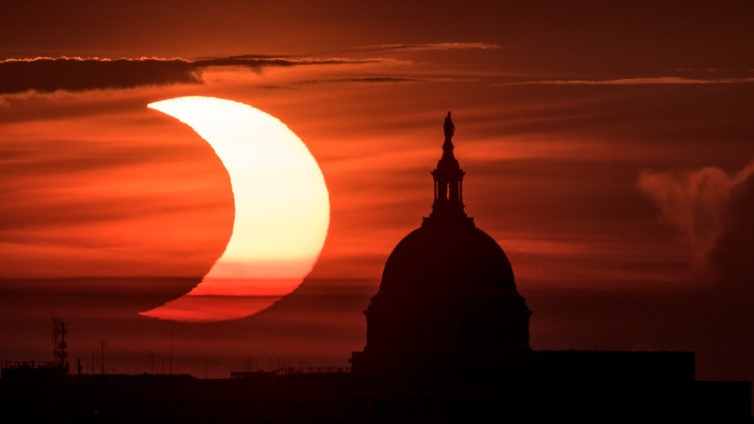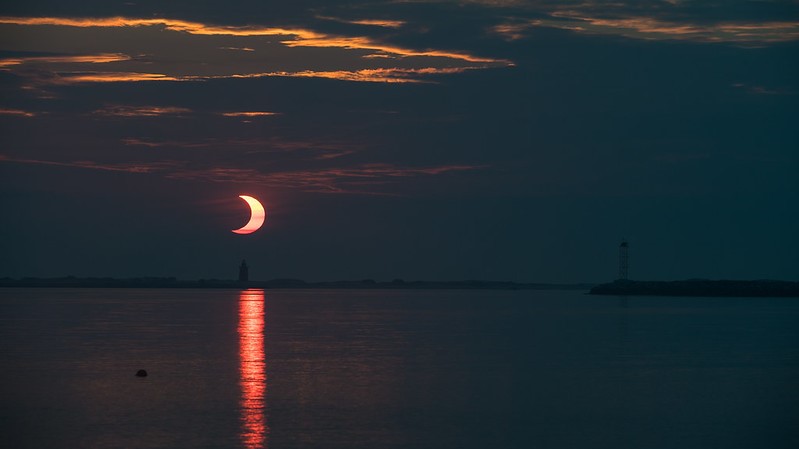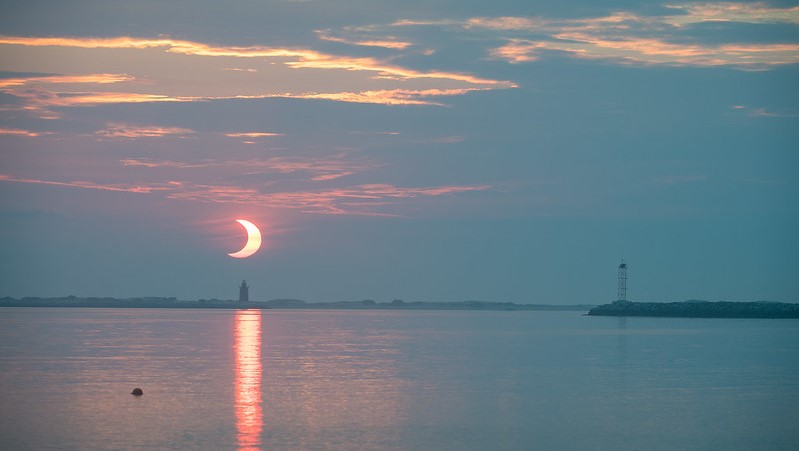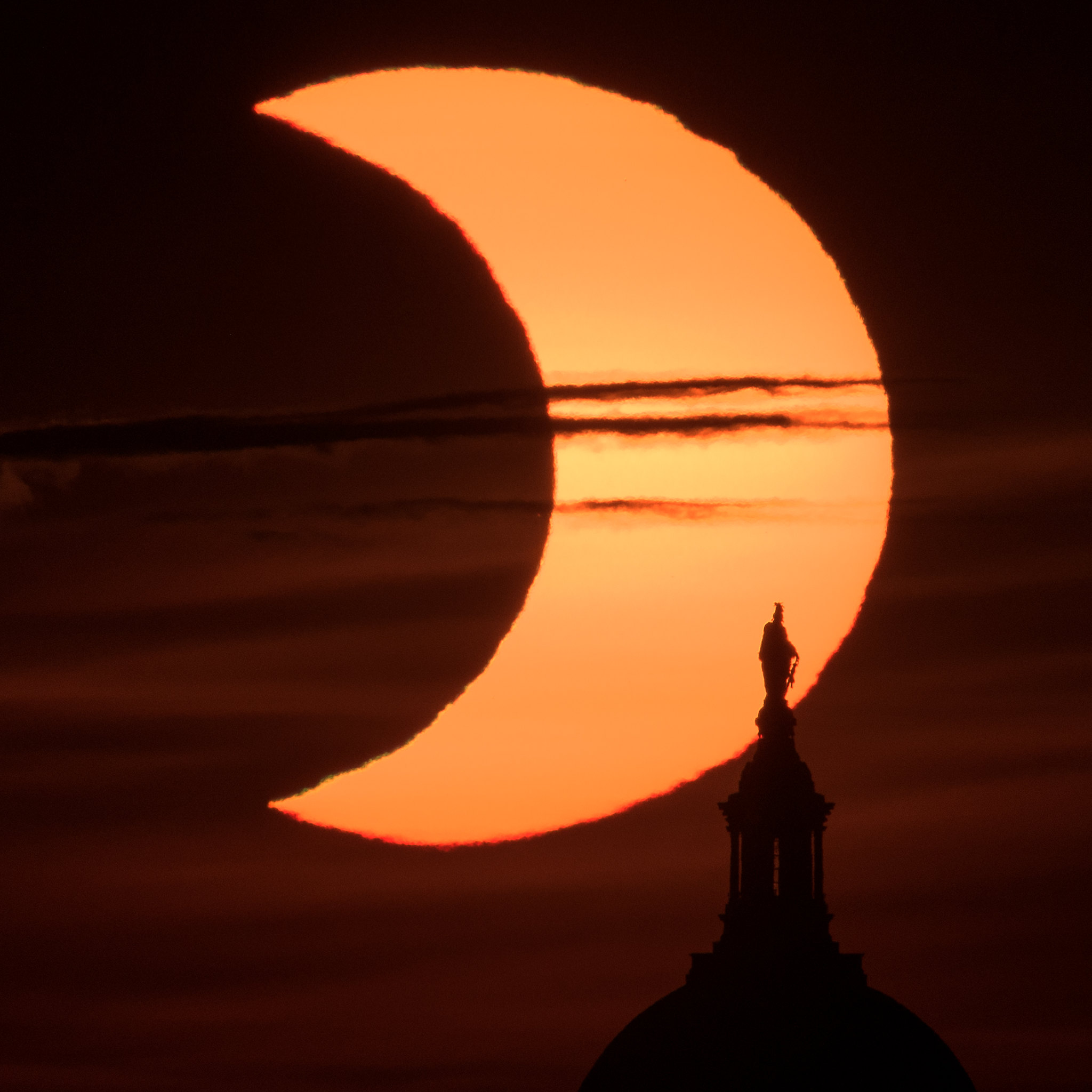These NASA photos of the sunrise solar eclipse of 2021 are just jaw-dropping
They may not show a "ring of fire," but they're still spectacular.

Most of the U.S. missed out on the "ring of fire" piece of year's first solar eclipse on Thursday (June 10), but parts of the East Coast caught a stunning sunrise partial eclipse to make up for it.
The June 10 annular eclipse was mostly visible over Canada, Greenland and Siberia, plus a small sliver of Michigan's Upper Peninsula. But skywatchers in a much wider range were able to catch the eclipse in partial phases. In many areas, the partial eclipse aligned closely with sunrise, making for a particularly eerie spectacle.
Related: 'Ring of fire' solar eclipse 2021: See amazing photos from stargazers
Two of NASA's staff photographers were on standby in the nation's capital and in Delaware to catch the incredible site. Bill Ingalls took in the view from Arlington, Virginia, where he was able to capture views of the eclipsed sun rising next to the U.S. Capitol building.
Meanwhile, Aubrey Gemignani headed to Lewes Beach, Delaware, where she framed her eclipse photographs against the Delaware Breakwater Lighthouse.

The eclipsed sun rises over the U.S. Capitol Building on June 10, 2021, in an image from NASA photographer Bill Ingalls.

A view of the partially eclipsed sun rising over the Delaware Breakwater Lighthouse on June 10, 2021, by Aubrey Gemignani.

A partial solar eclipse seen at sunrise with the U.S. Capitol building on display in an image taken June 10, 2021, by NASA photographer Bill Ingalls.

A partial solar eclipse seen during sunrise at Delaware Breakwater Lighthouse on June 10, 2021, photographed by Aubrey Gemignani.
An annular solar eclipse occurs when the moon passes between the sun and the Earth, but when our satellite is relatively far from Earth in its orbit, so it can't block the full disk of the sun. The result is a so-called "ring of fire" around the moon's dark circle.

Like a total solar eclipse, an annular solar eclipse is only visible from a small swath of Earth, although larger regions will be able to see the event as a partial solar eclipse. But without totality, no phase of an annular solar eclipse is safe to watch without eye protection, or to photograph without a proper solar filter.
Get the Space.com Newsletter
Breaking space news, the latest updates on rocket launches, skywatching events and more!
The next solar eclipse will occur on Dec. 4, but totality will only be visible from Antarctica and nearby ocean.
Email Meghan Bartels at mbartels@space.com or follow her on Twitter @meghanbartels. Follow us on Twitter @Spacedotcom and on Facebook.
Join our Space Forums to keep talking space on the latest missions, night sky and more! And if you have a news tip, correction or comment, let us know at: community@space.com.

Meghan is a senior writer at Space.com and has more than five years' experience as a science journalist based in New York City. She joined Space.com in July 2018, with previous writing published in outlets including Newsweek and Audubon. Meghan earned an MA in science journalism from New York University and a BA in classics from Georgetown University, and in her free time she enjoys reading and visiting museums. Follow her on Twitter at @meghanbartels.








